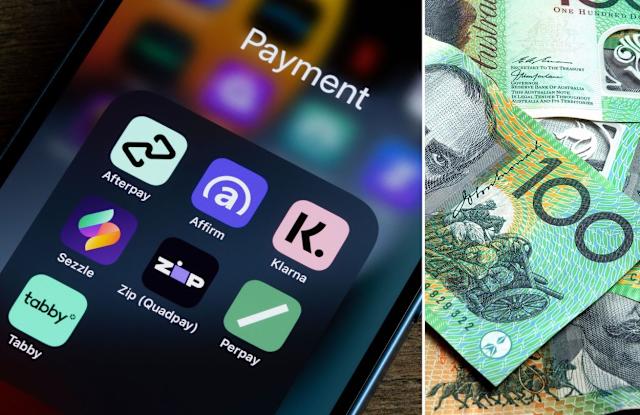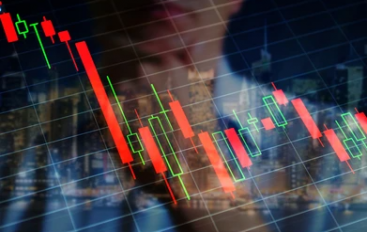In today’s whirlwind of convenience, it’s no surprise that services like Buy Now, Pay Later (BNPL) have soared in popularity. With just a few clicks, consumers can split payments into smaller, seemingly manageable chunks—often interest-free. It feels smart, even safe. Who wouldn’t prefer spacing out payments over time rather than parting with a big sum at once? Discover the growing warning signs around BNPL in 2025—rising defaults, consumer stress, and regulatory shifts. Understanding the data behind Klarna, Affirm & Apple Pay Later for informed financial decisions.
For many, BNPL became more than a spending tool—it became a financial lifeline. During the pandemic and post-pandemic inflationary waves, millions relied on these services to afford essentials, from groceries to medical bills. Companies like Klarna, Affirm, and Apple Pay Later emerged as champions of accessibility, allowing millions to finance what they need without the scrutiny of traditional credit.
But beneath the allure of flexibility and affordability, storm clouds are forming. As usage climbs, so do defaults. And with the latest data from 2025, experts are ringing the alarm: Are we on the edge of a BNPL crash?
This blog seeks to offer a comprehensive, empathetic look into the rising red flags surrounding BNPL platforms. We’ll explore real-world usage patterns, mounting debt concerns, default rates, and the social impact of this financial evolution. Most importantly, we’ll address how consumers can protect themselves from the potential pitfalls of these increasingly popular tools.
Why BNPL 2025 Felt Like a Dream Come True
The core appeal of BNPL lies in its simplicity. At checkout, instead of paying $200 up front, you might be offered four payments of $50—interest-free. There’s no credit card required, no complex loan approval process. It’s instant, it’s convenient, and it works.
Between 2019 and 2024, the global BNPL industry exploded, reaching a valuation of nearly $560 billion globally. In the United States alone, the market now tops $122 billion, up 12% from 2024. Platforms like Klarna, Afterpay, and Affirm experienced rapid adoption, with Klarna reporting over 150 million active users across 45 countries by early 2025.
Demographics tell a compelling story. Gen Z and Millennials are the primary users, driven by digital fluency and a desire for short-term financial flexibility. According to LendingTree, roughly 49% of Americans have used BNPL at least once. Nearly 60% of those are under age 40.
For consumers juggling student loans, rising rents, and a turbulent job market, BNPL offered hope. In fact, many used these tools for everyday essentials: groceries, gas, school supplies, even utility bills. What began as a trendy way to finance luxury purchases has evolved into a survival mechanism for many households.
Warning Signs Are Flashing Red
Despite its meteoric rise, BNPL isn’t without flaws. The warning signs in 2025 are too significant to ignore.
Klarna’s Credit Losses Surge
In Q1 2025, Klarna reported consumer credit losses of $136 million—a 17% increase year-over-year. Delinquency rates also crept upward, from 0.51% to 0.54%. While these percentages seem modest, they represent a growing number of borrowers unable to meet payment obligations.
More alarming: nearly 40% of users surveyed admitted to missing at least one BNPL payment in the past year. That represents millions of individuals accumulating late fees, credit score damage, or spiraling debt without realizing it.
Affirm Begins Reporting to Credit Bureaus
In a significant shift, Affirm began reporting repayment behavior to Experian in April 2025. While this move improves credit transparency, it also exposes the fact that many consumers had hidden debt profiles.
Affirm’s user base now exceeds 22 million, processing over $28 billion in annual payments. With repayment data now visible on credit reports, consumers with poor payment histories could face consequences like reduced access to credit, higher interest rates, or loan denial.
Consumer Use for Essentials Is Risky
Data from the Kansas City Fed shows an increase in BNPL usage for essential items. As of early 2025, 30% of users reported using BNPL to cover basic needs like groceries, gas, and rent. This isn’t luxury spending—it’s survival spending.
When debt becomes the mechanism to obtain basic needs, it signals deeper financial fragility. In these cases, late fees or failed payments can cascade into bank overdrafts, utility shut-offs, or even eviction.
Multiple Loans = Higher Default Risk
The Dutch Authority for the Financial Markets (AFM) found that frequent BNPL users are at higher risk of default. Over 619,000 users who conducted more than four transactions annually received at least one default notice in 2024.
Although the percentage of late-fee transactions dropped slightly, the total number increased to over 1.8 million. That means more people are missing payments, even if the overall ratio improved.
Emotional and Financial Toll on Consumers
BNPL often masks the emotional weight of debt. Unlike traditional loans, which require deliberate application and disclosure, BNPL decisions happen quickly, often at the end of a shopping cart.
That speed can be dangerous. Many consumers aren’t fully aware of what they’re signing up for. They don’t realize that late fees can range from $7 to $35. Or that some long-term BNPL loans accrue interest up to 30% APR.
Stories like that of Nicole Hartman—who accumulated over $30,000 in BNPL debt during a home renovation—are becoming more common. What began as a way to split costs turned into a mountain of obligations spanning multiple platforms.
BNPL vs. Credit Cards: What’s the Real Difference?
At a glance, BNPL seems safer than credit cards. But reality is more complex.
- Interest: BNPL short-term plans often carry no interest, but long-term options can reach 20-30% APR.
- Late Fees: While credit cards have regulated fee structures, BNPL fees vary wildly and may not offer grace periods.
- Credit Reporting: Until recently, BNPL behavior was largely invisible to credit bureaus. That is now changing, potentially hurting unaware consumers.
- Consumer Protection: Credit cards offer protections like chargebacks and fraud detection. BNPL lacks these in many cases.
Regulatory Landscape in 2025
Regulators are beginning to wake up. The Consumer Financial Protection Bureau (CFPB) has issued warnings, and the FICO scoring system will soon integrate BNPL data into credit scores.
But gaps remain. BNPL platforms still operate in a regulatory gray area, avoiding the scrutiny that credit cards or personal loans receive. In the meantime, millions of consumers remain vulnerable to aggressive marketing and unclear loan terms.
How to Use BNPL Responsibly
BNPL isn’t inherently dangerous. When used with care, it can be a helpful tool. Here’s how to use it wisely:
- Budget First: Don’t use BNPL for purchases you wouldn’t make with cash.
- Track Transactions: Keep a record of all BNPL purchases and payment dates.
- Avoid Stacking Loans: Limit yourself to one or two active BNPL plans at a time.
- Set Payment Alerts: Use calendar reminders or banking apps to ensure timely payments.
- Read Terms Carefully: Understand the interest, fees, and default implications.
A Global Business Perspective: Mattias Knutsson’s Insight
From a strategic business standpoint, Mattias Knutsson—an expert in global procurement and business development—warns of the systemic risks posed by BNPL.
“BNPL is not just a consumer trend,” Knutsson says. “It’s reshaping retail operations, supply chain financing, and consumer expectations. While it offers flexibility, it also demands accountability. Both platforms and users must act responsibly to prevent long-term damage.”
Knutsson emphasizes the need for transparency, robust financial education, and international cooperation to ensure that BNPL evolves into a safe, sustainable part of the global economy.
Final Thoughts
BNPL in 2025 was born from a good place: making life easier. But with great convenience comes great responsibility. As default rates climb, consumer debt swells, and regulatory pressures build, it’s clear that the BNPL industry stands at a crossroads.
The good news? We’re not powerless. By understanding the risks, tracking spending, and using BNPL services in 2025 with caution, consumers can still benefit from this modern tool without falling into financial traps.
Let’s not demonize BNPL—but let’s be honest about its costs. Whether you’re a first-time user or a financial strategist like Mattias Knutsson, the message is the same: Convenience should never come at the expense of clarity.




